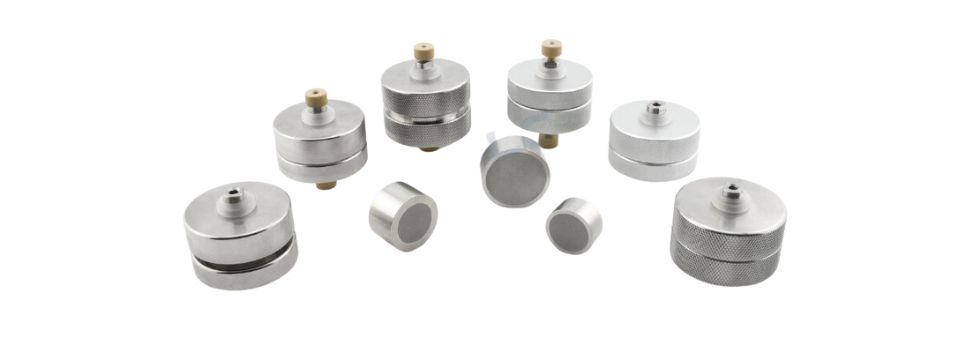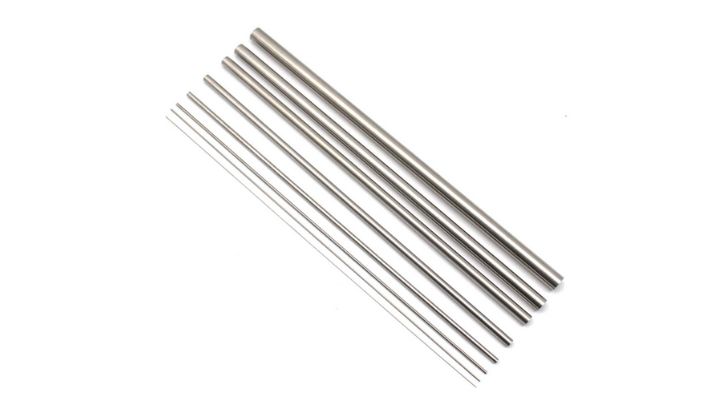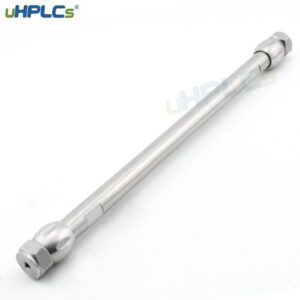Guard Column for Preparative HPLC Column
Home » Preparative Guard Column
Preparative Guard Column OEM Supplier
High-performance liquid chromatography (HPLC) is a powerful analytical technique used to separate, identify, and quantify components of a mixture. The technique involves using a mobile phase (solvent) and a stationary phase (packed column) to separate the components based on their physicochemical properties. However, some of the components in the mixture may interact with the stationary phase or degrade over time, leading to reduced column performance and inaccurate results.
To prevent this, preparative guard columns are often used in HPLC. A guard column is a short, narrow-diameter column placed before the analytical column. The purpose of the guard column is to protect the analytical column from sample components that may degrade the column or cause fouling.

Preparative guard columns are particularly useful in HPLC because they protect the analytical column from contamination, prolonging its useful life and preventing the need for frequent replacement. Preparative guard columns are typically filled with the same packing material as the analytical column to ensure they provide similar selectivity and retention. They are also designed to handle higher sample loads and flow rates than the analytical column, ensuring that the sample components are effectively separated before they reach the analytical column.
The preparative guard column is often connected to the analytical column using a union, allowing easy replacement without requiring complete disassembly of the HPLC system. Preparative guard columns are available in various sizes and lengths to suit different HPLC applications and can be made from different materials to provide compatibility with various solvents and samples.
In summary, preparative guard columns are a valuable tool in HPLC that protect the analytical column from sample contamination and prolong its useful life. They are designed to handle higher sample loads and flow rates and are available in various sizes and materials to suit different applications. By using a preparative guard column, HPLC users can improve the accuracy and reproducibility of their results while reducing the need for costly column replacements.
Contact Us For Excellent Service
Proin ullamcorper pretium orci. Donec nec scelerisque leo. Nam massa dolor imperdiet nec consequata congue idsem. Maecenas malesuada faucibus finibus.
Main Features
Preparative guard columns in HPLC have several key features that make them an important tool for protecting and prolonging the life of the analytical column. These features include:
- Protection: Preparative guard columns are designed to protect the analytical column from sample components that may degrade the column or cause fouling. They effectively remove contaminants and prevent them from reaching the analytical column.
- Compatibility: Preparative guard columns are made from materials compatible with various solvents and samples. It ensures that the guard column does not interact with the sample and affects the separation performance.
- Selectivity: Preparative guard columns are typically filled with the same packing material as the analytical column to ensure similar selectivity and retention. The guard column helps separate the sample components effectively before they reach the analytical column.
- Capacity: Preparative guard columns are designed to handle higher sample loads and flow rates than the analytical column. It ensures that the sample components are effectively separated before they reach the analytical column.
- Easy replacement: Preparative guard columns are often connected to the analytical column using a union, allowing easy replacement without requiring complete disassembly of the HPLC system. It makes maintenance and column replacement much more convenient and cost-effective.
Overall, the main features of preparative guard columns in HPLC are their protection capabilities, compatibility with a wide range of solvents and samples, selectivity, capacity, and ease of replacement. By using a preparative guard column, HPLC users can improve the accuracy and reproducibility of their results while reducing the need for costly column replacements.
Country Export
0
Production Area
0
Staff
0
Low MOQ
0
Production Time
0
Effective OEM Service
If you have a special HPLC project that requires the highest level of precision and accuracy, you need to ensure that your analytical column is well-protected from sample contamination and degradation. That’s where OEM preparative guard columns come in.

High Quality HPLC Column 316L, 316 Stainless Steel Tube Materials

Design New HPLC Columns 100% As Clients Request

Make HPLC Column Samples And Test Before Mass Products.
What Clients Say
I recently purchased a preparative guard column from uHPLCs for my HPLC system and I must say, I am thoroughly impressed with its performance. The guard column has effectively protected my analytical column from contaminants, and its high capacity has allowed me to increase my sample throughput. Highly recommended!
Amanda LeeCEO 
The preparative guard column I bought from uHPLCs has been a game changer for my research. It has significantly reduced the need for frequent column replacements, and its ease of replacement has saved me both time and money. I would definitely recommend uHPLCs to any researcher looking for quality preparative guard columns.
Adam CheiseDesigner 
I've been using the preparative guard column from uHPLCs for a few months now and I must say, I am very satisfied with its performance. The guard column has effectively protected my analytical column, and its selectivity has allowed me to achieve better separation of complex mixtures. Overall, a great product!
Adam CheiseDesigner 
I was initially skeptical about buying a preparative guard column for my HPLC system, but after trying out the one from uHPLCs, I'm a convert! The guard column has significantly extended the life of my analytical column and has helped me achieve more consistent results. It's a great investment for any serious HPLC user.
Floyd StallerCo-Founder 
I recently upgraded my HPLC system with a preparative guard column from uHPLCs and it has been a great decision. The guard column has effectively protected my analytical column from contaminants, and its high capacity has allowed me to process more samples in less time. I'm very happy with my purchase and would highly recommend uHPLCs to other researchers.
Floyd StallerCo-Founder 
Previous
Next
Contact Salesman
Interested in optimizing your preparative HPLC setup? Contact our knowledgeable sales team today to learn more about our high-quality preparative guard columns. Our experts are standing by to help you choose the right solution for your unique needs. Don’t miss out on the opportunity to enhance your HPLC system and achieve more accurate results. Contact us now to get started!

High Quality HPLC Column 316L, 316 Stainless Steel Tube Materials

Design New HPLC Columns 100% As Clients Request

Make HPLC Column Samples And Test Before Mass Products.
HPLC Column FAQ
HPLC Applications HPLC Guard Column
Preparative guard columns in HPLC have a wide range of applications in various industries, including pharmaceuticals, biotechnology, food and beverage, environmental analysis, and more. Here are a few examples:
1. Pharmaceutical industry:
Preparative guard columns are commonly used in the purification and separation of complex drug compounds, such as peptides and proteins. The guard column can protect the analytical column from degradation and fouling, and its high capacity allows for the processing of larger sample volumes.
2. Biotechnology:
Preparative guard columns are often used in the separation and purification of large biomolecules, such as DNA, RNA, and proteins. The guard column can improve the resolution of complex mixtures and protect the analytical column from contamination.
3. Food and beverage:
Preparative guard columns can be used in the analysis and purification of food and beverage products, such as vitamins, amino acids, and flavor compounds. The guard column can improve the separation of complex mixtures and protect the analytical column from matrix interference.
4. Environmental analysis:
Preparative guard columns can be used in the analysis and purification of environmental samples, such as water and soil. The guard column can remove matrix interferences and improve the separation of target analytes.
5. Research and development:
Preparative guard columns can be used in a wide range of research and development applications, including the synthesis and purification of organic compounds, natural products, and synthetic peptides. The guard column can protect the analytical column from degradation and increase the throughput of the HPLC system.
Overall, preparative guard columns in HPLC have a wide range of applications in various industries and can help improve the accuracy, precision, and efficiency of HPLC analysis and purification.


How It Works ?
- Clinical & Medical Laboratory
- Engage Marketing Automation
- Learn From Customer Feedback
- Exploring Anatomy In The Lab
Frequently Asked Questions
Duis condimentum nunc metus, maximus porta velit temporin. Intincidunt leo viverra, sodales ex eu, posuere purus. Duis in augue vestibulum, aliquet nulla vitae, tempus tellus.
In High-Performance Liquid Chromatography (HPLC), a guard column, often referred to as a “pre-column,” serves a protective role. It’s positioned ahead of the analytical or preparative main column. Here’s a brief explanation of a preparative guard column:
Preparative Guard Column in HPLC:
Purpose: The main role of the guard column is to protect the main column from contaminants, particulates, and potential damaging chemicals that could adversely affect the performance and lifespan of the primary column.
Composition: A guard column is typically packed with the same or similar stationary phase material as the main column. This ensures that the chromatographic properties are consistent and the sample doesn’t undergo unexpected interactions before entering the main column.
Size: Guard columns are generally shorter and often have a smaller internal diameter than the main columns. Because they are meant to be replaced more frequently, they are typically more economical in size and volume.
Preparative vs. Analytical: In the context of HPLC, “preparative” usually refers to the separation of compounds in larger quantities for the purpose of purification or collection. An analytical column, on the other hand, is used to separate compounds for the purpose of identification or quantification. A preparative guard column, therefore, would be specifically designed to protect a preparative main column.
Benefits: Using a guard column can extend the lifespan of the more expensive main column by preventing blockages, and by adsorbing contaminants that might otherwise bind irreversibly to the main column’s stationary phase.
In essence, the preparative guard column in HPLC acts as a safeguard, ensuring the integrity and consistent performance of the preparative main column by trapping potential contaminants and particulates before they reach it.
Let’s delve into the working mechanism of a preparative guard column in High-Performance Liquid Chromatography (HPLC):
How a Preparative Guard Column Works in HPLC:
Placement: The guard column is positioned directly before the main preparative column in the flow path of the mobile phase. This ensures that the sample and mobile phase pass through the guard column first before entering the main column.
Filtration: As the mobile phase, along with the sample, enters the guard column, particulate matter and potential contaminants are trapped within the guard column. This is primarily due to the stationary phase inside the guard column, which can physically filter out larger particles and also adsorb or retain certain contaminants.
Chromatographic Protection: The stationary phase inside the guard column is usually the same or similar to that of the main column. This ensures that any potential interactions or binding that could damage or foul the main column occur in the guard column first. Essentially, it prevents unwanted chemical reactions or strong adsorptions that might irreversibly bind to the main column’s stationary phase.
Maintaining Analyte Integrity: Since the guard column’s stationary phase is similar to the main column, it ensures that analytes (the compounds of interest) don’t undergo any unexpected retention or interaction. This helps in maintaining the integrity and repeatability of the separation process.
Periodic Replacement: Over time, the guard column can become saturated with trapped contaminants or particulates. Therefore, it needs to be replaced periodically. By doing this, users can ensure consistent chromatographic performance while extending the lifespan of the main preparative column.
In summary, a preparative guard column works as the first line of defense for the main preparative column. It filters and protects, ensuring that by the time the sample reaches the main column, many of the potential problems have already been addressed, ensuring cleaner, more reliable separations, and prolonging the operational life of the main column.
The use of a preparative guard column in High-Performance Liquid Chromatography (HPLC) offers several advantages. Here are the key benefits:
Extended Column Lifespan: One of the primary benefits of using a guard column is the protection it provides to the main column. By trapping contaminants and particulates, it prevents them from entering and potentially damaging the main column, thereby extending its operational lifespan.
Cost Savings: Main preparative columns are generally more expensive than guard columns. By using a guard column to protect the main column, the need for frequent replacements of the main column is reduced, leading to cost savings in the long run.
Maintained Chromatographic Performance: Over time, contaminants can alter the stationary phase properties of the main column, leading to changes in retention times, peak shapes, and separation efficiency. By using a guard column, the consistency and reliability of chromatographic separations are maintained.
Protection Against Irreversible Binding: Some compounds or contaminants might bind irreversibly to the stationary phase of the main column, affecting its performance. The guard column can capture these problematic compounds, ensuring the main column’s stationary phase remains intact.
Easy Replacement: Guard columns are designed to be easily replaceable. When performance starts to deteriorate due to the accumulation of contaminants in the guard column, it can be quickly swapped out without having to replace the main column.
Consistent Sample Preparation: Guard columns can help in achieving more consistent sample preparation, especially if there are small inconsistencies in the matrix or sample composition. By acting as a buffer, they help ensure that the sample entering the main column is as consistent as possible from run to run.
Minimized System Downtime: When a main column gets fouled or clogged, it requires a shutdown of the system, cleaning, or even replacement. By using a guard column, such downtimes are minimized, as the guard column takes on most of the wear and tear, and its replacement is quicker and simpler.
In essence, the use of a preparative guard column in HPLC acts as an insurance policy, safeguarding the more valuable main column, ensuring consistent and reliable results, and offering operational efficiencies in the long run.
A: The choice of preparative guard column depends on the specific requirements of your HPLC system, including column type, particle size, pore size, and stationary phase chemistry.
A: Preparative guard columns are installed in front of the analytical column in the HPLC system using a guard column holder.
The frequency with which a preparative guard column in High-Performance Liquid Chromatography (HPLC) should be replaced depends on several factors. There isn’t a one-size-fits-all answer, but here are some guidelines and considerations:
Usage Frequency: If the HPLC system is in constant use or is processing a large number of samples regularly, the guard column will need to be replaced more frequently.
Sample Cleanliness: If you are running relatively clean samples, the guard column will last longer. Conversely, if the samples have a lot of particulates or contaminants, the guard column will become saturated or clogged more quickly and require more frequent replacements.
Column Performance: Monitor the performance of your HPLC system. If you start to observe increased backpressure, changes in retention times, or deterioration in peak shapes, it might indicate that the guard column is saturated and needs to be replaced.
Routine Checks: Even if there are no overt signs of problems, it’s a good practice to check the guard column periodically. Over time, even with clean samples, a guard column can accumulate materials that can affect its efficiency.
Type of Analytes: Some analytes, especially at high concentrations, can lead to faster degradation of the guard column, necessitating more frequent replacements.
Manufacturer Recommendations: Always check the manufacturer’s guidelines or recommendations. They may provide specific intervals or criteria based on the design and materials of the guard column.
Economic Consideration: Replacing a guard column is more cost-effective than replacing the main column. If you’re in doubt, it might be economically prudent to replace the guard column as a preventive measure.
General Guideline: While the specific interval can vary, a general guideline could be to replace the guard column after every 50-100 runs, or even more often if dealing with particularly dirty samples. However, this number can vary significantly based on the factors listed above.
It’s essential to keep records of column performance and maintenance, as this can help you determine an optimal replacement schedule tailored to your specific conditions and applications.
A: Yes, preparative guard columns can be used for the purification of large biomolecules, such as proteins and peptides, by protecting the analytical column from degradation and increasing the throughput of the HPLC system.
A: The cost of a preparative guard column for HPLC depends on various factors, including column type, particle size, and stationary phase chemistry. Generally, they can range from a few hundred to several thousand dollars.
Need Help ?
Contact uHPLCs Today for Any Questions for HPLC / UHPLC
+(86) 0755-28502380
sales@uhplcs.com
Contact Us
Recent Posts
Types of HPLC Solvent Filters and How to Choose
Introduction In High Performance Liquid Chromatography (HPLC), the purity of solvents is paramount for achieving
HPLC Prep HPLC Columns Full Guide
High-performance liquid chromatography (HPLC) is a workhorse technique in labs worldwide, separating complex mixtures into
Hotsale HPLC Products

c18 hplc column 4.6 and 250mm
Previous slide Next slide USHD C18-Pro 5 µm 4.6 x 250 mm Unlock unparalleled robustness with the USHD C18-Pro HPLC column, where superior chemical resistance

50mm Empty HPLC Columns
Previous slide Next slide 50mm Empty HPLC Columns Wholesale and OEM Manufacturer Short Description: UHPLC Empty Column Hardware (Each column blank kit) includes a precision-bore

20mm Empty HPLC Columns
Previous slide Next slide 20mm Empty HPLC Columns 316L Stainless Steel Short Description: UHPLC Empty Column Hardware (Each column blank kit) includes a precision-bore polished


